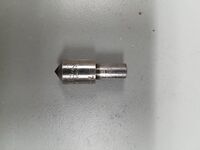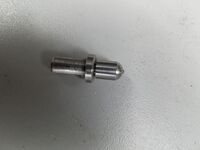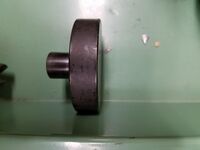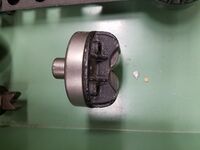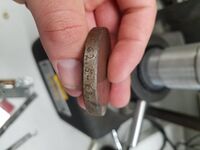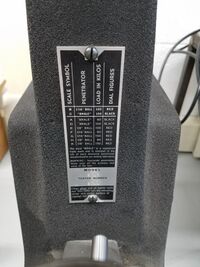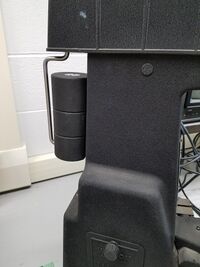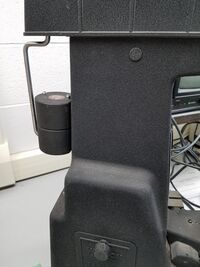Rockwell Hardness Tester
The Rockwell Hardness Tester is located in EP 109 (the LASER Lab). This apparatus is convenient for measuring the hardness of a material on the Rockwell Scale and requires very sensitive testing equipment. The original users manual can be located at the bottom of this page and here.
Hardware[edit | edit source]
| Part | Name | Description |
|---|---|---|
| "C" Brale Indenter | Used for indentations on the C scale with 150kg load | |
| 1/16" ball indenter | Ball indenter, usually used for B scale indentations with 100kg load | |
| Flat Anvil | Anvil used for flat specimens. | |
| Round Stock Anvil | This is an anvil used for testing round specimens. there are various sizes of these anvils, also the V-shaped anvils may also be used for specimens of appropriate size. | |
| Calibration block | This is a large round piece of metal that is a predetermined hardness of 62.5-63.5 C for calibration or testing. Note that this is in the C scale, requiring the C brale and 150kg load. |
Setup[edit | edit source]
In order to use the Rockwell Hardness Tester, there are many testing parameters that must be known to set up. These setup parameters include:
- Load
- Indenter Type
- Anvil Style
In order to identify the load and indenter to use, there is a table located on the tester itself that has guidelines shown to the right. This table is relatively self-explanatory. For example, if you wish to test something using the Rockwell C scale, the diagram lists using a Brale and 150kg loads.
Adjusting the load[edit | edit source]
Once the user has consulted the chart, the loads may be changed by simply lifting the weights on the back of the tester one at a time. The weights are Poke-yoke to go together, so the top load is 50kg, the middle is 40kg, and the bottom weight, which cannot be removed, is 60kg.
User Instructions[edit | edit source]
- Put in correct indenter and adjust load accordingly before use.
- 1) Make sure the small lever is pulled forward to support the load
- 2) Turn nut on the bottom of the stand clockwise until the material being tested makes solid contact and the small dial points straight up to the black dot (applies minor load of 10kg)
- 3) Zero the gauge by turning the black adjuster just below the captains nut
- 4) Depress the load release lever located at the bottom of the captains nut to apply the major load
- 5) After waiting for the dial to stop moving (~20 sec) pull the level forward again to support the load
- 6) Record the corresponding number on the gauge pertaining to the indenter used (B or C scale). Number once load is removed is Rockwell Hardness
- 7) Turn the nut counterclockwise to lower the platform until the indenter is no longer in contact with the material you were testing
- 8) Remove the material from the tester
Maintenance[edit | edit source]
One of the best parts about the Rockwell Hardness Tester is that it requires very low maintenance. If the platform elevation screw makes any noise, apply oil to the threads (there is oil in the box containing the anvils and indenters).
Also, sometimes the dashpot located within the tester itself can run low on oil. To check this, open up the side door located on the bottom of the hardness tester and unscrew the cap to the dashpot that the plunger is sticking out of. There should be oil all the way up 1/4" from the bottom of the threads. If it is low, fill with oil using the oil located in the anvil holding box. If unsure of these methods, check the users manual pg 13 located in the resources section of this page.
Future Refurbishment Suggestions[edit | edit source]
While the Rockwell Hardness Tester is functional, there are a few recommendations in order to make the machine more versatile such as:
- Acquire more calibration blocks for both softer ranges in the C scale and also for the B scale


